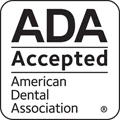Did you know that your oral health is tied to your overall health? For example, periodontal (perry-oh-DON-tal) disease, also known as gum disease, is more common in people with chronic diseases like some forms of heart disease or diabetes than in people without these diseases. This brochure explains the connection between your mouth health and your overall health.
If you snore, then you probably already know that it can be an annoying distraction for your bedtime partner. But, snoring could also be a sign of a common sleep-related breathing disorder called sleep apnea (AP-nee-yuh). Sleep apnea occurs when your breathing slows down or stops one or more times when you are sleeping.
This causes your brain to wake your body up so that you can take in a deeper breath and get the right amount of oxygen. You may also take shallow or short breaths while you sleep. This cycle can repeat dozens or even hundreds of times each night. Over time, this can put a lot of physical stress on your body and can lead to serious health problems if it’s not treated — like heart disease or diabetes.
Gingivitis (jin-ji-VY-tis) is an early stage of gum disease. The bacteria in plaque make your gums red, tender and swollen. Your gums might also bleed at this stage. If left untreated, gingivitis can lead to more advanced stages of gum disease.
But, the good news is, gum disease at this stage is usually reversible. If it is caught early enough (when it is gingivitis), you may simply need a professional cleaning and to keep up with daily hygiene: brushing and cleaning between your teeth. Your dental team can also give you advice for improving your daily oral hygiene.
If gingivitis is not treated, it can turn into periodontitis (perry-oh-don-TIE-tis). As plaque and tartar build up where your teeth and gums meet, the gum tissues and bone around your teeth begin to break down. Periodontitis is usually not painful, but it can lead to bone loss and, in more severe cases, teeth that may need to be removed.
Gum disease is an infection and inflammation that affects the tissues and bone that support your teeth. Plaque (pronounced PLACK) is a sticky film of bacteria that is always on your teeth. If it is not removed with regular daily hygiene, it can make your gums red, puffy and swollen. When plaque is left on your gums and teeth, it can harden. Hardened plaque is also known as tartar. Tartar on your teeth makes it difficult for you to keep your teeth and gums clean on your own.
As gum disease gets worse, the tissues and bones that support your teeth can become damaged. Over time, your teeth may need to be removed. Gum disease happens often in adults, and if it’s not treated it can lead to tooth loss.
You may notice one or some of these warning signs, or you may not have any signs of gum disease at all. This is why it’s important to see your dentist regularly — treatment of gum disease is most successful when it’s caught early.
Diseases that lower your body’s ability to fight infections may raise your risk of gum disease. And, sometimes having gum disease is shown to raise the severity of chronic disease. While it may not be clear whether one drives the other, some of the chronic diseases that commonly occur at the same time as gum disease are:
Tell your dentist about any chronic diseases or changes in your overall health.
Many of the medications used to treat other diseases can affect your mouth by causing dry mouth. These include medications used to treat blood pressure, allergies and pain. Dry mouth can make it difficult for your saliva to help keep your mouth clean, increasing the risk of oral health problems like tooth decay and gum disease.
Make sure your dentist knows about all the medications you are taking.
Using tobacco products of any kind, like cigarettes, dip, chew and hookah can increase your risk of gum disease. The disease can also get worse the longer you use tobacco.

Healthygums and bone hod teeth firmly in place.
Periodontitis happens over time, as plaque builds up along the gum line. Your body responds to the toxins that the bacteria produce, which may result in the breakdown of the gum tissues and bone around your teeth.
In general, it costs much less to keep your teeth and gums healthy than to treat a problem once it happens. These healthy habits can help:
Look for the ADA Seal

When shopping for oral health care products like toothbrushes, between-the-teeth cleaners or mouthrinses, look for the ADA Seal of Acceptance on the package. The Seal tells you that the product has met the ADA’s standards for safety and effectiveness.
For more information about taking care of your mouth and teeth, visit MouthHealthy.org, the ADA’s website just for patients.


"*" indicates required fields